Learn how to make Maesil-cheong(매실청), a traditional Korean fermented syrup made from green plums and sugar. It’s fruity, tangy, and rich in probiotics — perfect for summer sodas, teas, or cooking. This DIY syrup is zero-waste and easy to make at home with only 2 ingredients.
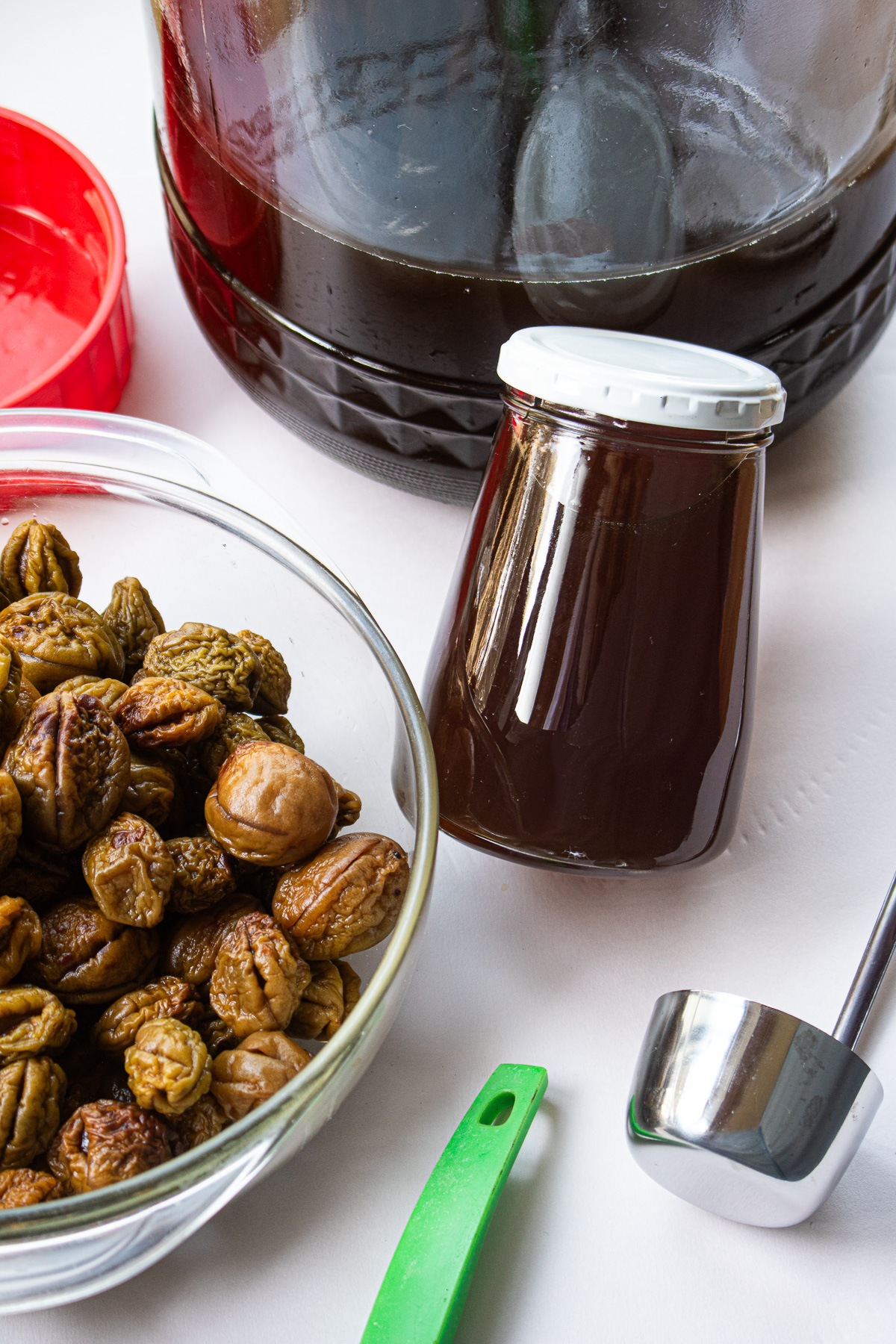
Jump to:
- 🍑 What Is Maesil-cheong?
- 🍶 Korean Green Plum Syrup vs Japanese Ume Syrup
- 🧂 Tools & Equipment
- ☝️ Important Maesil Preparation (Don’t Skip This!)
- 🥣 How to Make Korean Green Plum Syrup (Step-by-Step)
- 📌 Tips for Success
- 🧊 Storage & Shelf Life
- 🐰 Left Over Plums?
- 🍹 How to Use Maesil-cheong
- ❄️ Seasonal Note
- 💭 FAQs – Korean Maesil Syrup
- 📖Want More Ume Recipes?
- 🇰🇷More Korean Dishes
- 📖 Recipe Card
🍑 What Is Maesil-cheong?
Maesil-cheong is a traditional Korean green plum syrup made by fermenting unripe plums (maesil) with sugar. As the plums sit, they slowly release their juices, creating a rich, amber-colored syrup. It’s used as a natural sweetener, a digestive tonic, and a remedy for fatigue. In Korean households, this syrup is a pantry staple — especially during the humid summer monsoon season.
🍶 Korean Green Plum Syrup vs Japanese Ume Syrup
Many people confuse Korean maesil syrup with Japanese ume syrup, but they’re quite different:
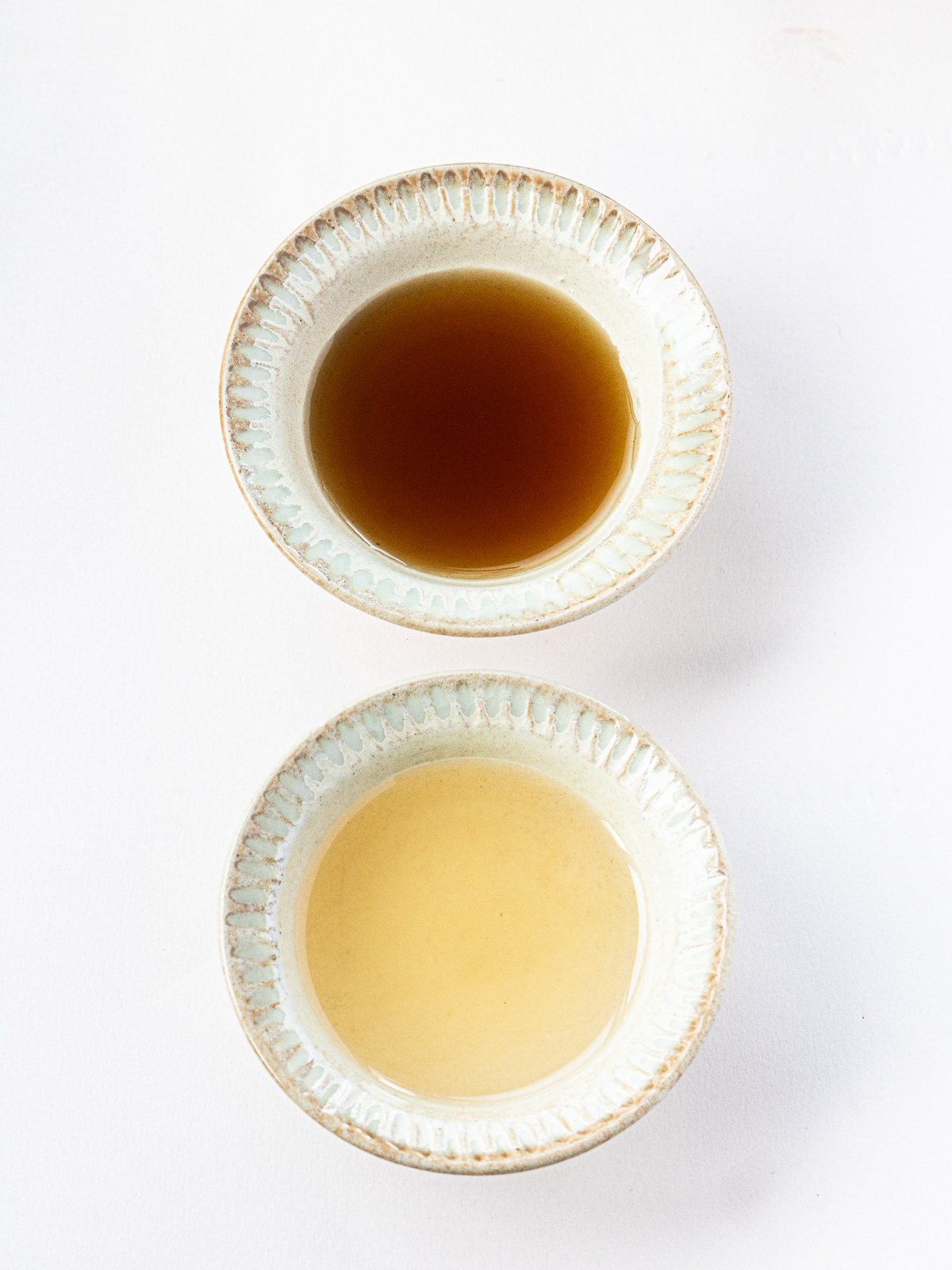
▲: Korean Maesil-cheong ▼: Japanese Ume Syrup(Chai Ume Syrup)
| Feature | Korean Maesil-cheong | Japanese Ume Syrup |
|---|---|---|
| Fruit | Green maesil (plum) | Ume (Japanese plum) |
| Method | Cut plums, ferment in sugar | Whole plums + rock sugar |
| Taste | Bright, tart, complex | Mild, sweet |
| Texture | Light and syrupy | Thicker |
🛒 Ingredients You’ll Need
- Green plums (maesil): Use unripe, firm green plums. These are typically in season from late May to early June in Korea and Japan. Their tartness is perfect for making syrup.
- Brown sugar: I recommend using brown sugar instead of white. It adds a deeper, richer flavor and gives the syrup a beautiful golden color. Plus, it still works wonderfully as a natural preservative.
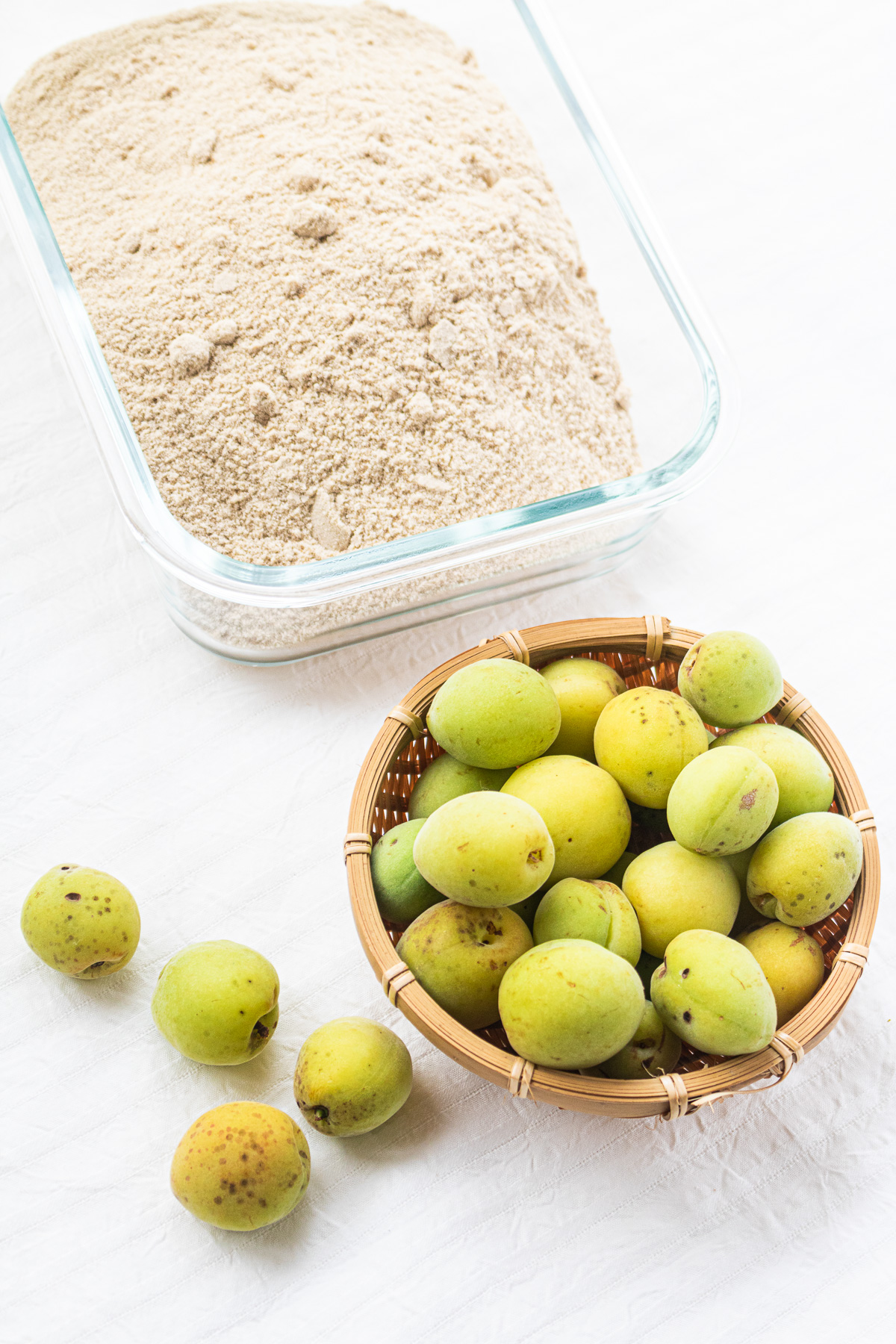
📏 Ratio Guide
Use a 1:1 ratio by weight of green plums to sugar. For example:
- 1 kg green plums
- 1 kg sugar
This ensures proper fermentation, prevents spoilage, and gives you a balanced syrup.
🧂 Tools & Equipment
- Sterilized 3L glass jar with airtight lid: A clean, dry jar is essential to prevent mold during fermentation.
- Wooden spoon or silicone spatula: Use non-metal tools for stirring.
- Clean cloth or paper towels: To dry the plums thoroughly before fermenting.
- Toothpick or skewer: Perfect for removing plum stems efficiently.
💡 TIP:
Avoid using metal tools if possible! The natural acidity of green plums can react with metal, which may alter the flavor and even damage your utensils.
If you must use metal, be sure to wash it immediately after use to prevent corrosion or unwanted flavor changes.
☝️ Important Maesil Preparation (Don’t Skip This!)
Before you dive into making Maesil-cheong, there’s one crucial step that can make the entire process smoother: prepping the plums. It takes a bit of time and care, so I recommend doing this the night before you plan to start the syrup.
🚰 Wash and Prep the Green Plums
Start by giving the green plums a thorough wash to remove any dirt or residue. Then, using a toothpick or skewer, gently remove the stems from each plum. This step might seem tedious, but there’s a little trick that makes it much easier:
How to remove plum stems quickly:
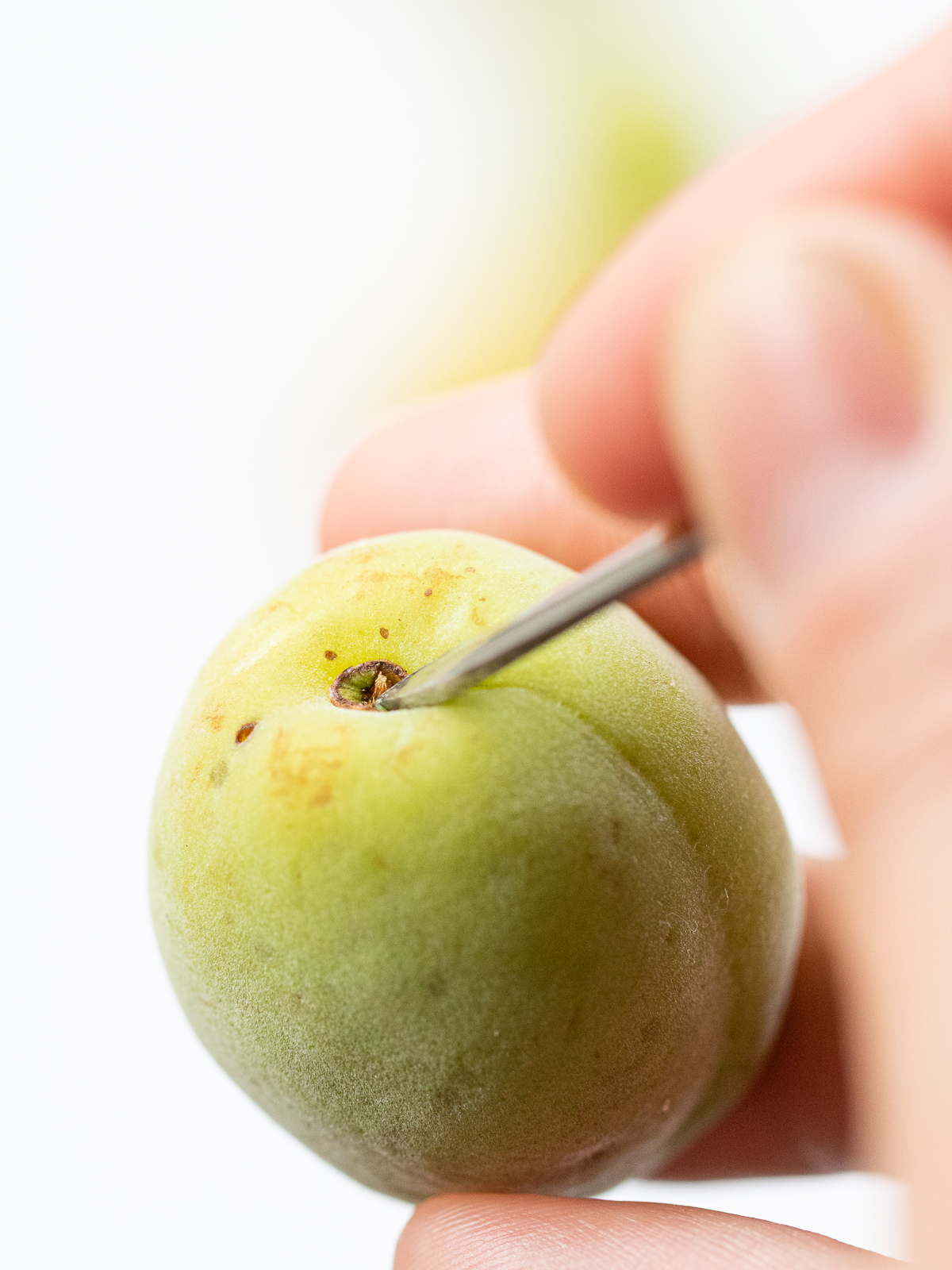
Hold the plum steady and press the skewer firmly into the edge of the stem.
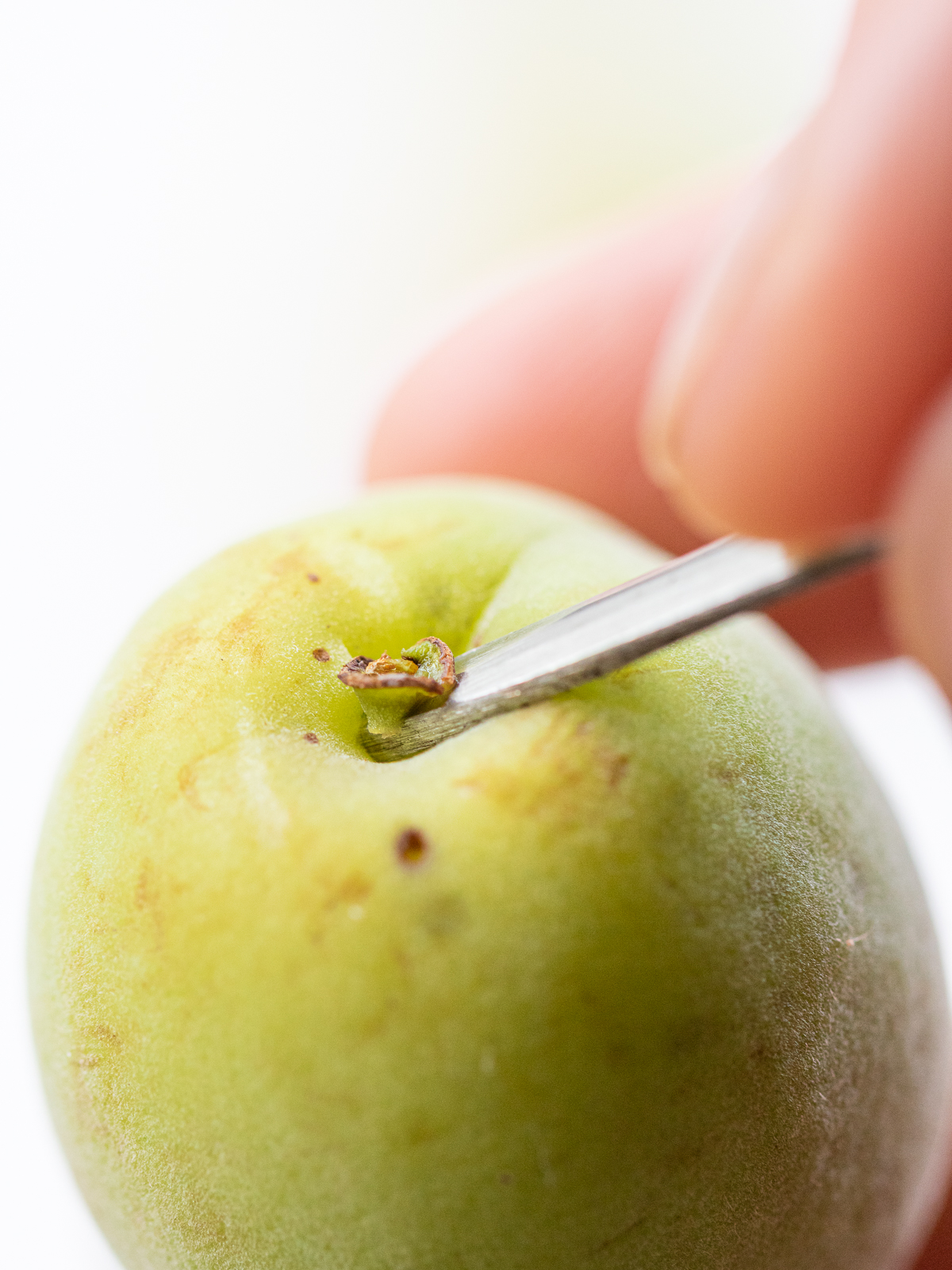
Then lift it straight up
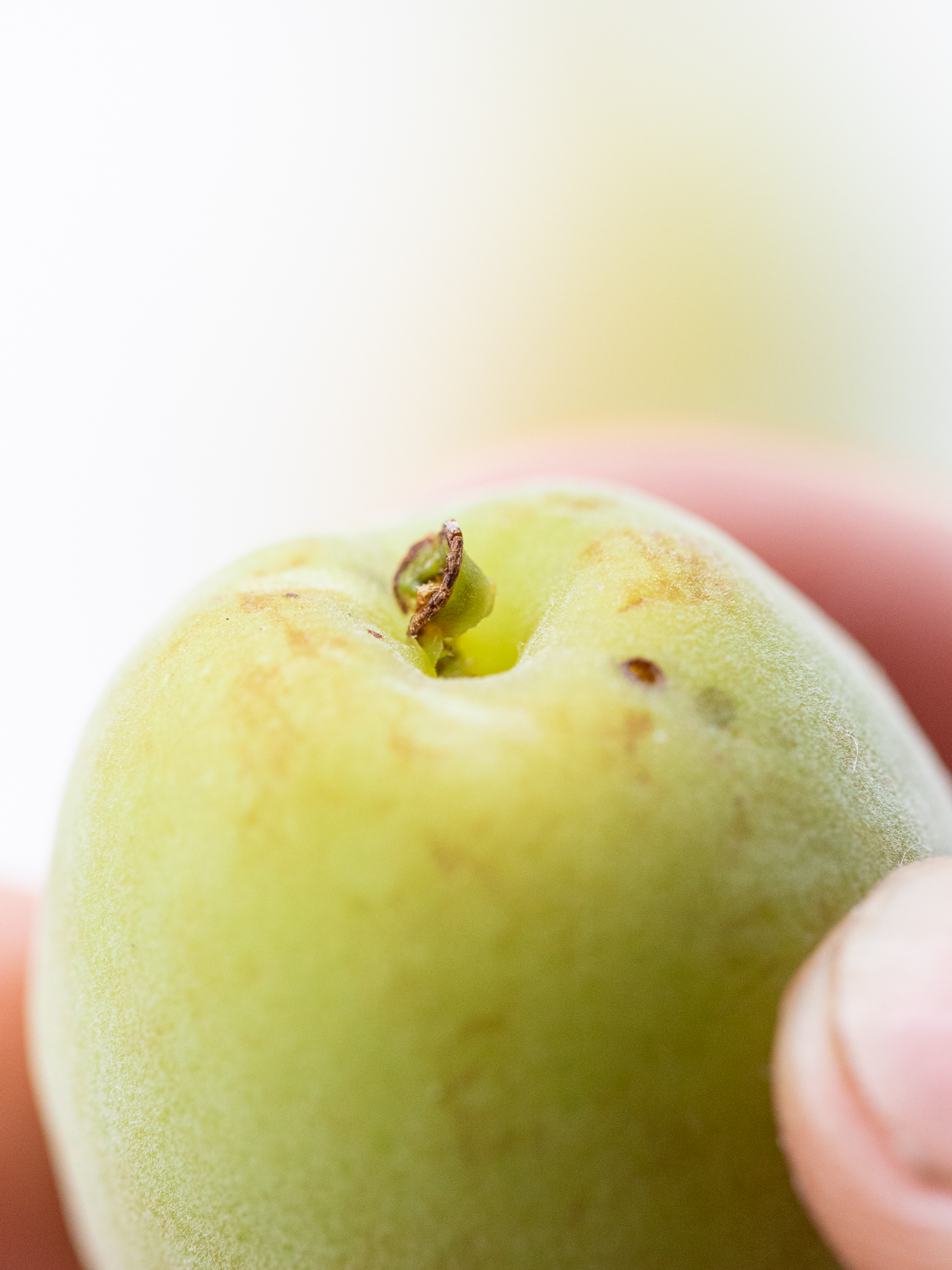
— the stem should pop right out with little effort!
After all the stems are removed, dry the plums completely using a clean kitchen towel. Any leftover moisture can increase the risk of mold during fermentation, so don’t skip this step!
🥣 How to Make Korean Green Plum Syrup (Step-by-Step)
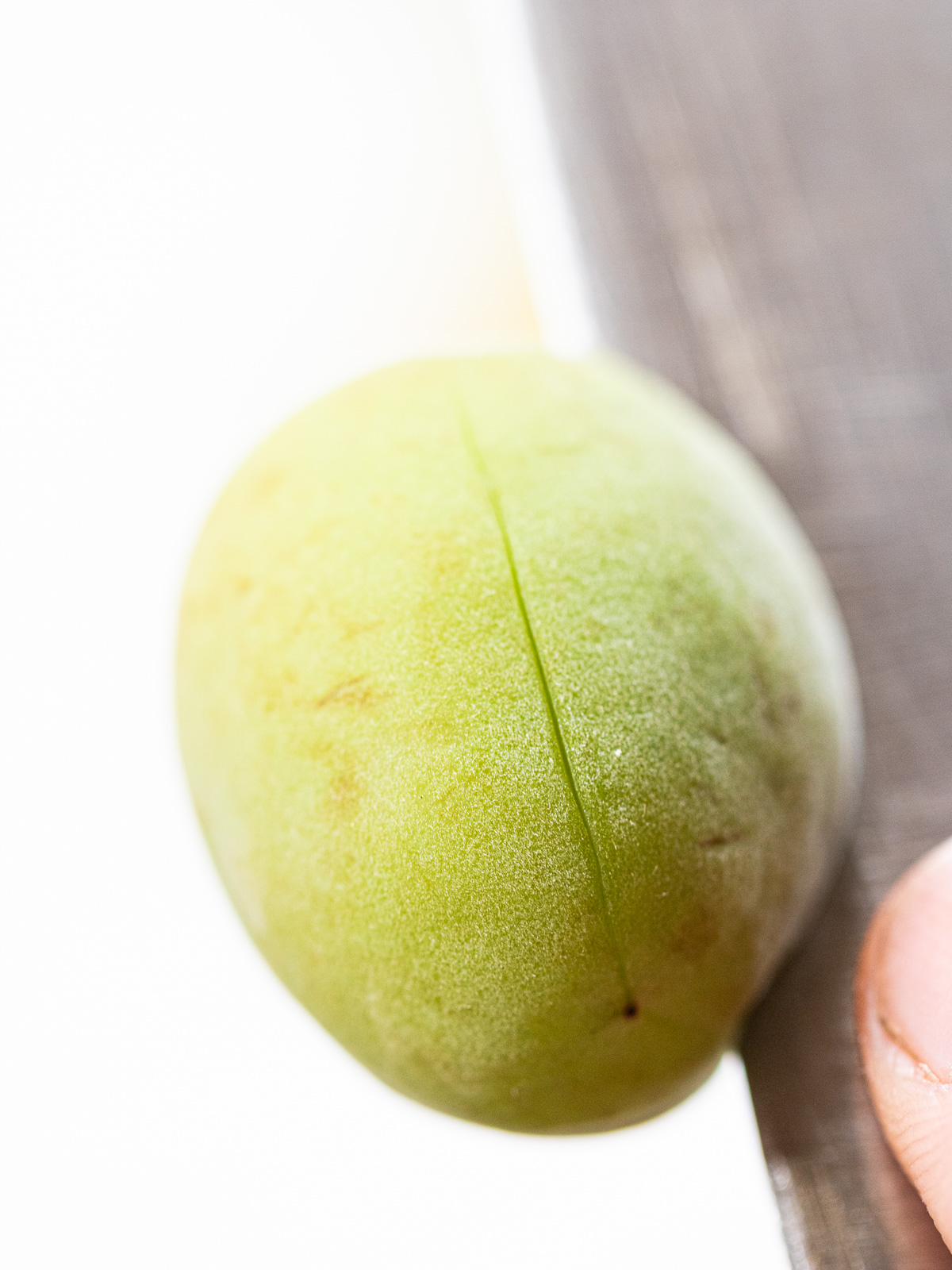
- Cut the Plums: Slice 3–4 shallow cuts around each plum. This allows juice to extract faster and more evenly.
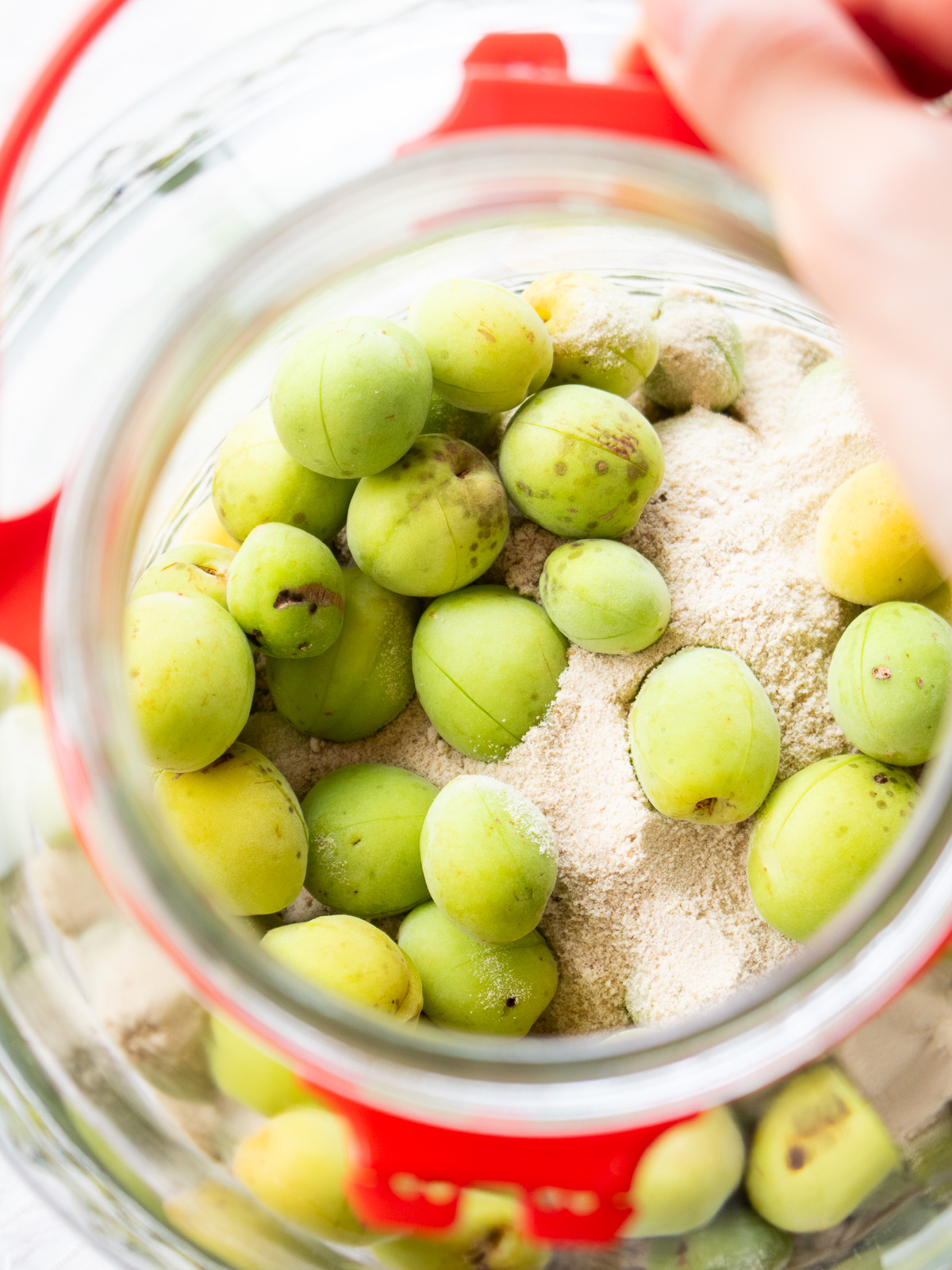
- Layer Sugar and Plums in a Jar: In a clean, dry glass jar:
・Add a layer of sugar.
・Add a layer of plums.
・Repeat until full, ending with a layer of sugar.
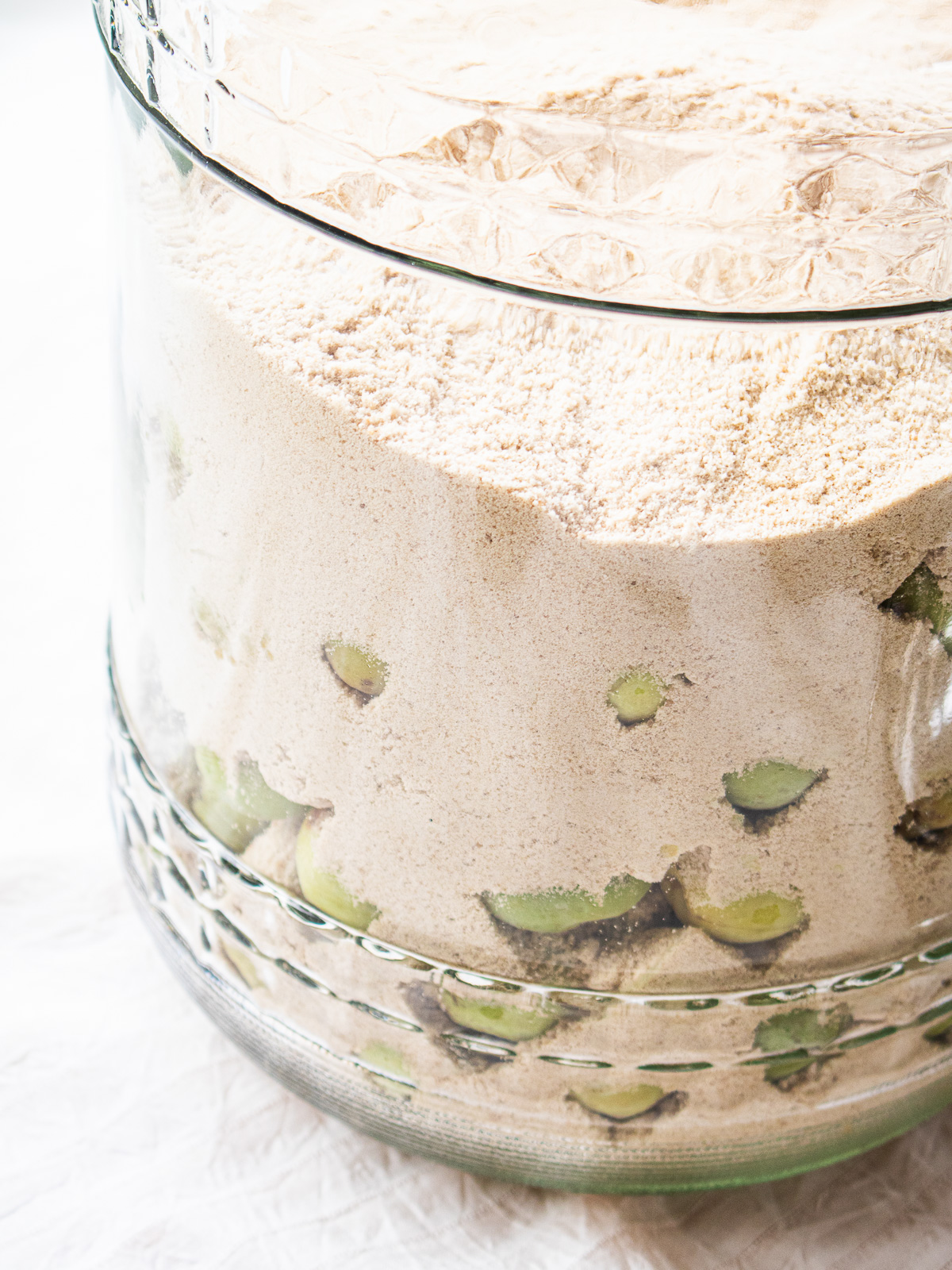
- Start the Fermentation: Seal the jar and store it in a cool, dark place. Stir every 2–3 days with a non-metallic utensil. After ~5 days, juice will begin to form.
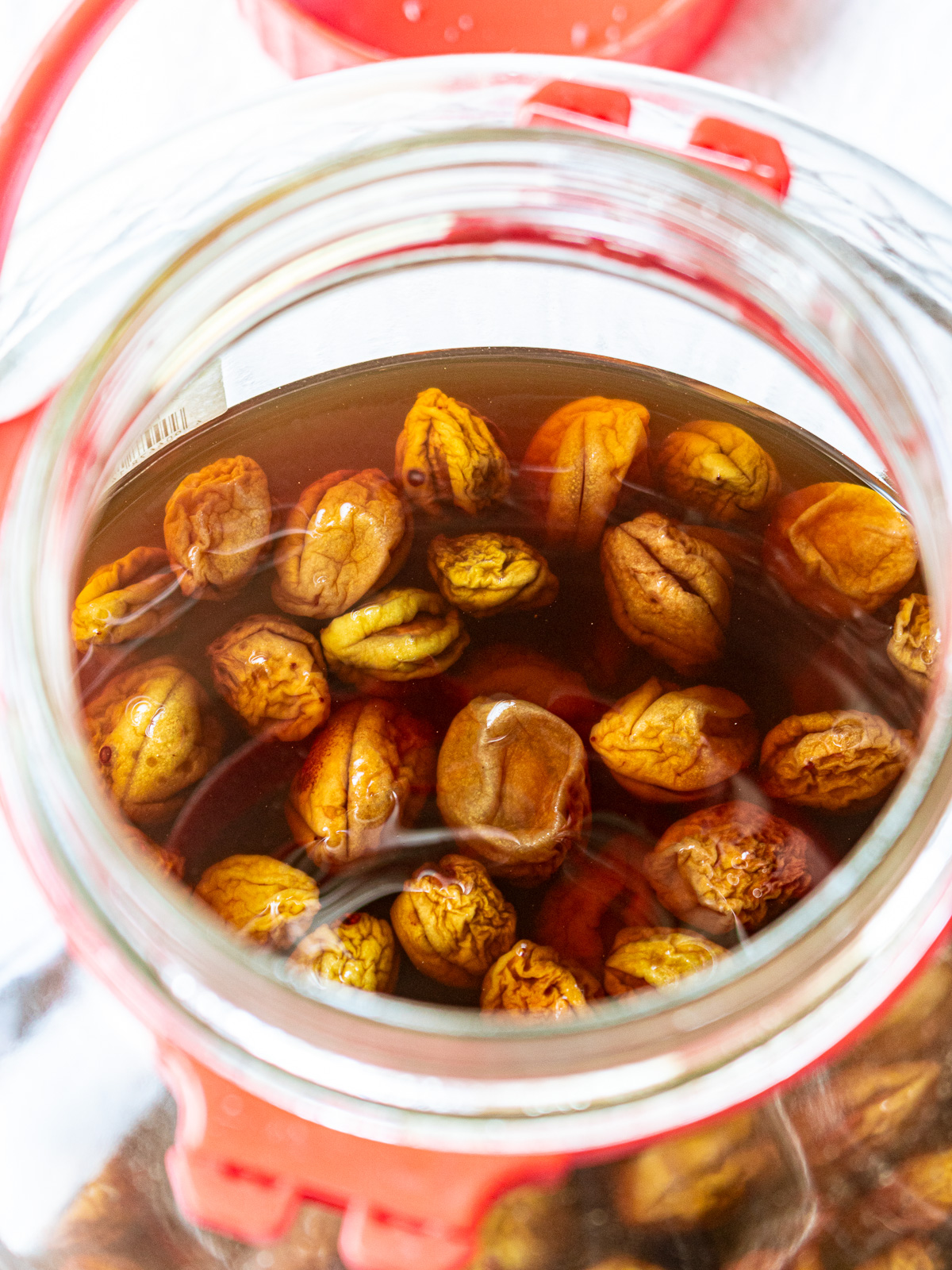
- Wait for 100 Days: Let the mixture ferment for about 3 months (90–100 days). Once fully extracted, strain out the plums and transfer the syrup to clean bottles.
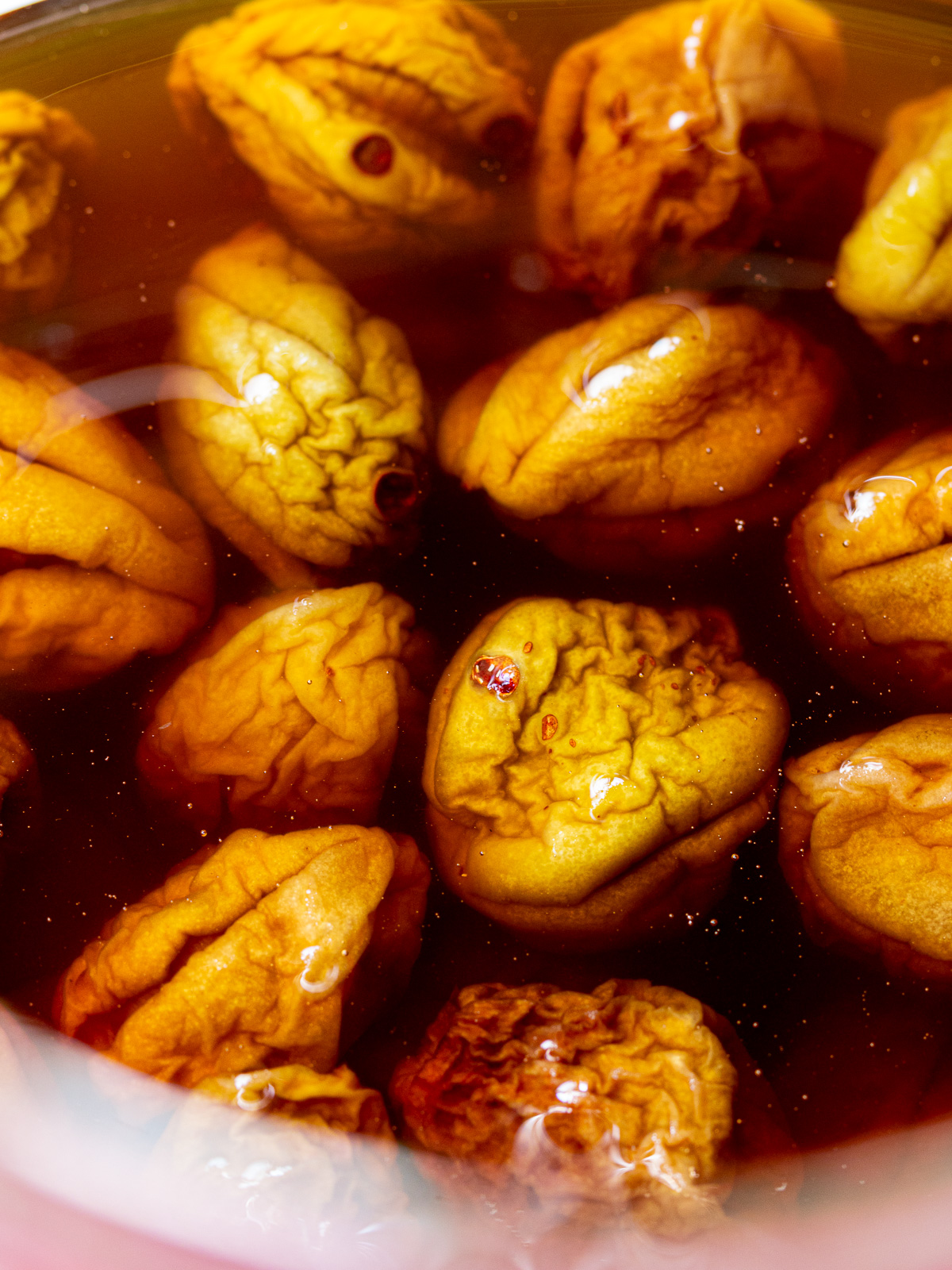
📌 Tips for Success
- Ensure plums are 100% dry before use
- Keep all tools and containers sterilized
- Don’t skip stirring during fermentation (every 2–3 days)
- If mold forms on the surface, skim it off immediately
🧊 Storage & Shelf Life
Once your maesil-cheong (Korean green plum syrup) is ready, keep it in a cool, dark place. Some people like to let it age for a year or two to develop a richer flavor, but you can start using it right away if you’d like.
If you’re portioning it into smaller jars for everyday use, just keep in mind that frequent opening can cause it to spoil more quickly. In that case, it’s a good idea to store those jars in the fridge to keep them fresh.
🐰 Left Over Plums?
Bonus tips! Any leftover plums can be turned into:
- maesil-jangajji (plum pickles)
- Added to marinades, yangneomjang (양념장)
- chai spiced blueberry plum jam
🍹 How to Use Maesil-cheong
- Maesil tea (매실차): 1 tablespoon syrup + hot or cold water
- Korean BBQ marinade: Add sweetness and tang to bulgogi or tofu marinade
- Salad dressings: Replace honey or sugar with this syrup
- Make Korean Sauce: Here is my special Yangnyeomjang (양념장) with Korean Plum Syrup recipe!
- Desserts: Drizzle over yogurt, pancakes, or fruit
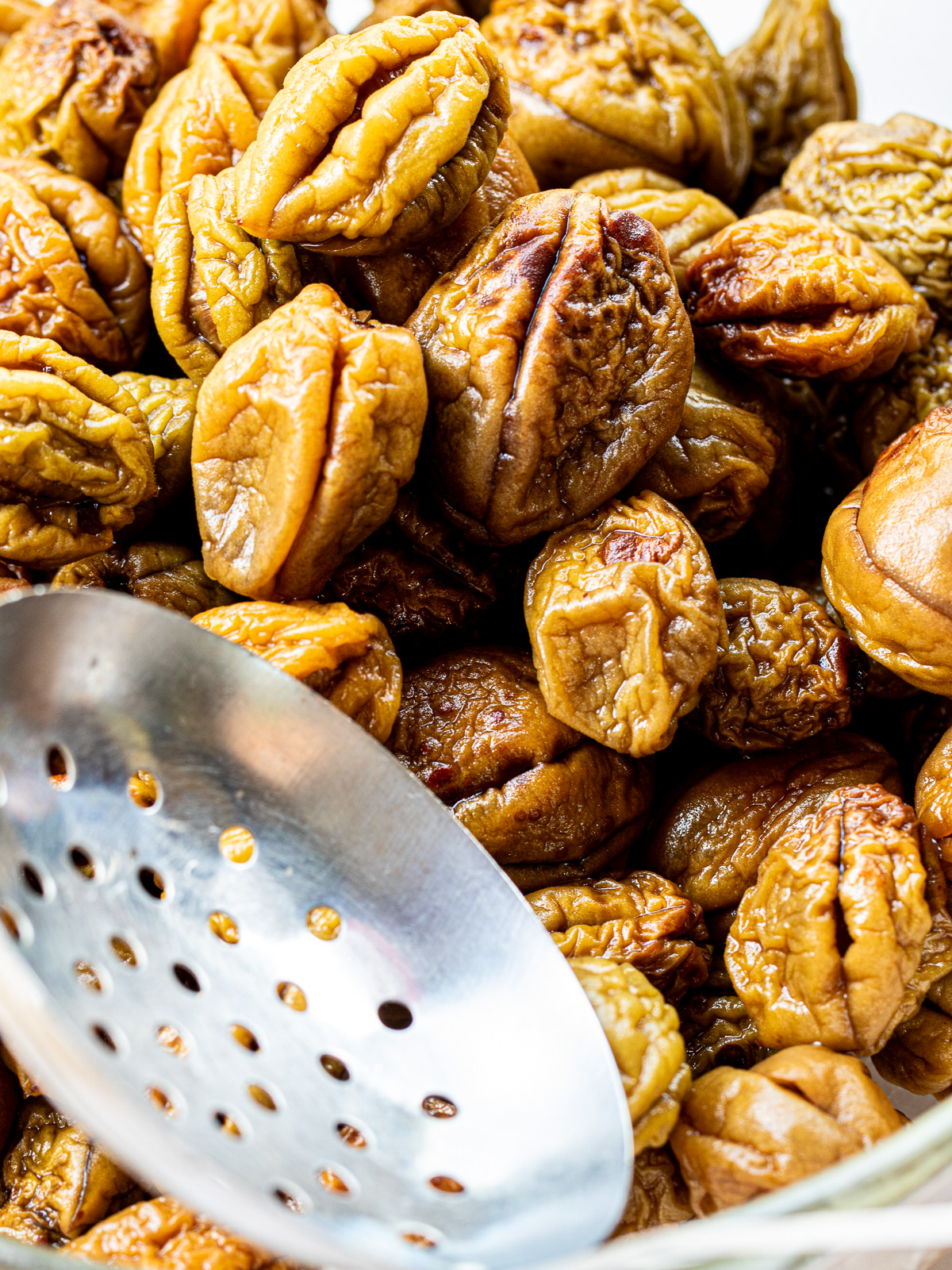
❄️ Seasonal Note
Green plums are only available for a few short weeks each year. In Korea and Japan, they’re typically harvested between late May and early June — so don’t miss your window!
💭 FAQs – Korean Maesil Syrup
A. No — green unripe plums are essential. Ripe ones may cause spoilage and reduce syrup quality.
A. Yes, but brown sugar or unrefined sugar yields deeper flavor.
A. Avoid metal utensils, as they can react with the acidic syrup. Stick to glass, plastic, or silicone.
A: The syrup should have a clear amber color, and the sugar should be fully dissolved. A pleasant, fruity aroma indicates successful fermentation.
📖Want More Ume Recipes?
If you would like to explore more Ume world, check out these :
🇰🇷More Korean Dishes
If you are a Korean food lover...

If you try this recipe, please share your thoughts in the COMMENTS 🐒. Also feel free to ask any questions or leave any requests!
📖 Recipe Card
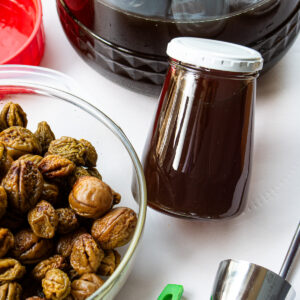
Korean Green Plum Syrup (Maesil-cheong)
Equipment
- 1 glass jar 3L
- 2 glass jar 930ml for storage
- 1 skewer
- paper towel
- 1 kitchen knife
- 1 strainer ladle
Ingredients
- 1 kg green plums (maesil, unripe and firm)
- 1 kg sugar (brown sugar is recommended)
Instructions
- Wash the green plums: Rinse thoroughly to remove any dirt or residue.1 kg green plums
- Remove stems: Use a toothpick or skewer to remove the stems from each plum.
- Dry completely: Pat dry with a clean kitchen towel. Moisture increases the risk of mold.
- Cut the plums: Make 3–4 shallow cuts around each plum to help the juice release more quickly and evenly.
- Layer sugar and plums: In a sterilized, dry glass jar, add a layer of brown sugar, then a layer of plums. Repeat until the jar is full, ending with a sugar layer on top.1 kg sugar
- Seal and store: Close the lid and keep the jar in a cool, dark place. Avoid direct sunlight.
- Stir regularly: Every 2–3 days, gently stir with a wooden or silicone utensil (no metal!) or tilt the jar to redistribute sugar.
- Ferment for 90–100 days: After 5–7 days, syrup will begin to form. Continue fermenting for about 3 months.
- Strain and bottle: Once fully extracted, strain the syrup into clean bottles or jars. Discard or reuse the leftover plums if desired.
Notes
Tips:
- Use only firm, unripe green plums (usually available May–June).
- Make sure all tools and jars are sterilized and dry to prevent mold.
- If mold appears, discard the batch and try again — cleanliness is key!
- For easier stem removal, press a skewer into the edge of the stem and lift straight up.
Important!
- Avoid metal tools — the acidity of green plums can react with metal, which may affect the flavor and even damage your utensils.
- Stick with wood, silicone, or plastic for safe and clean fermentation.
- If you must use metal, wash it thoroughly right after use to prevent corrosion or off flavors.

💬Did you try this recipe? Let me know how it turned out in the comments— or mention #vegin_vegan_vegun or just tag us @veginveganvegun with your delicious creations!
Also check out How to Make Japanese Ume Syrup and Plum Recipes Collection!
Wishing you all a wonderful, healthy, and happy day🕊

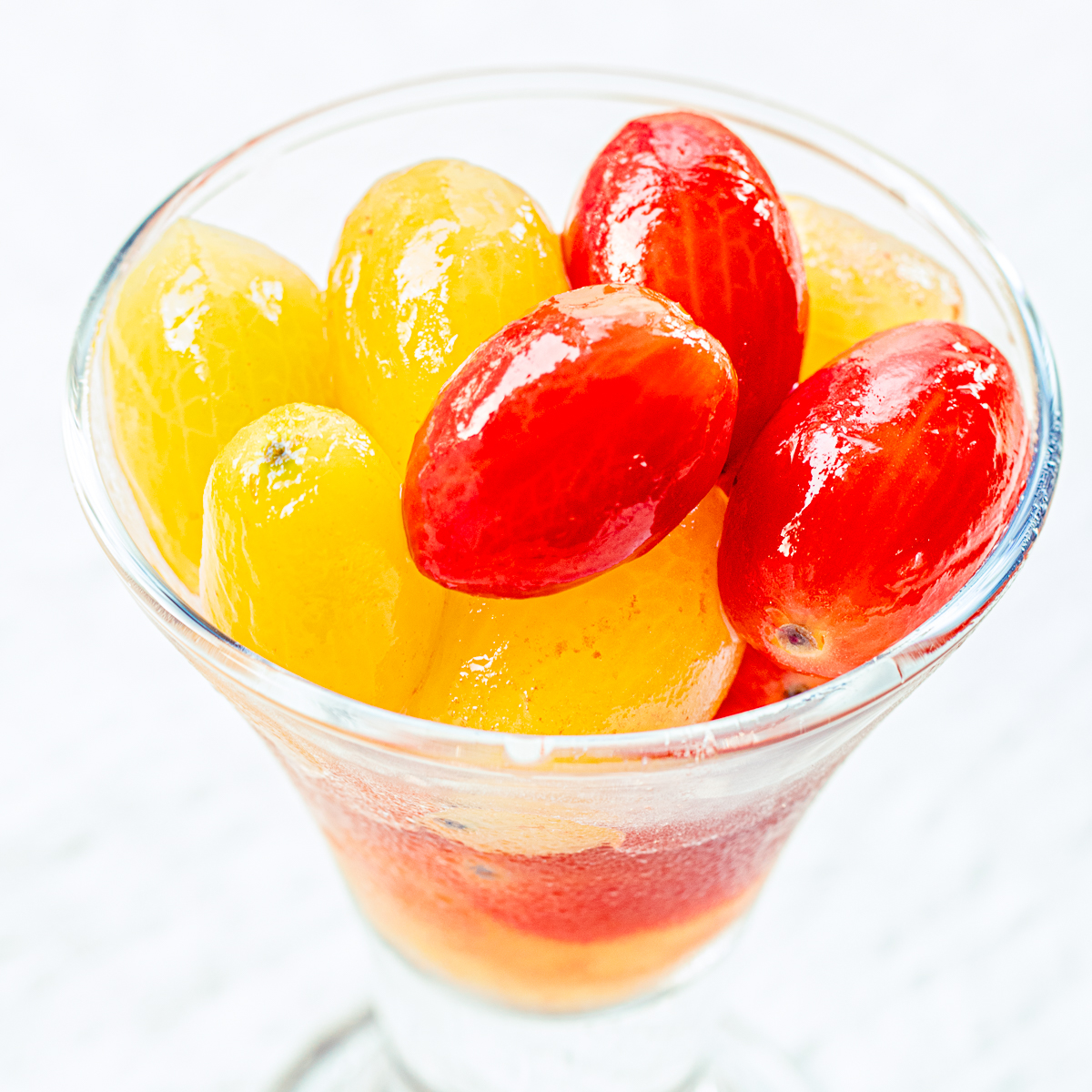
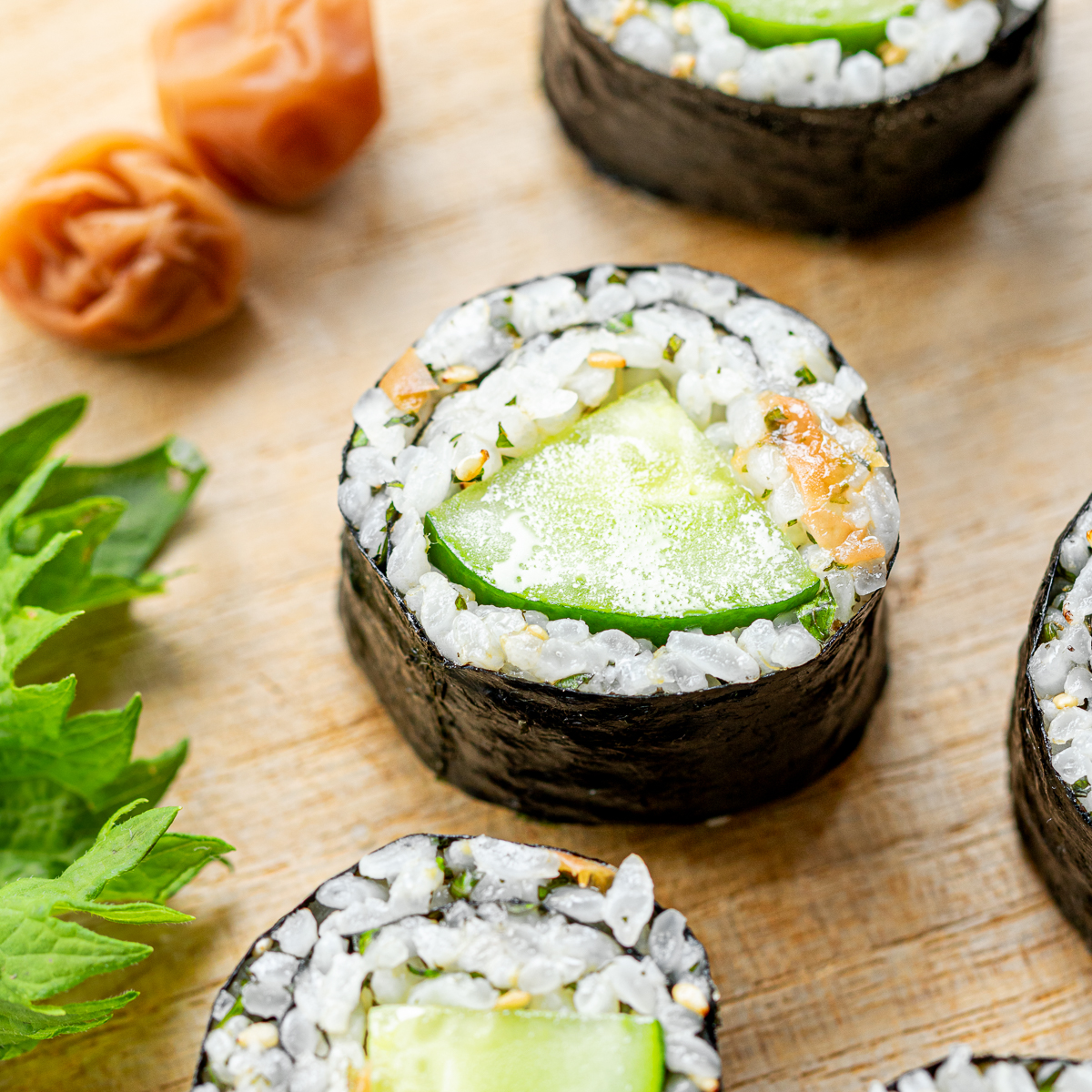


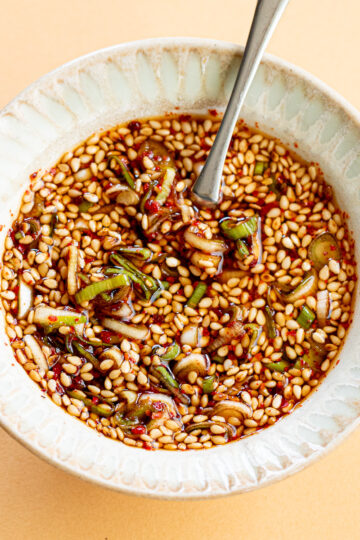


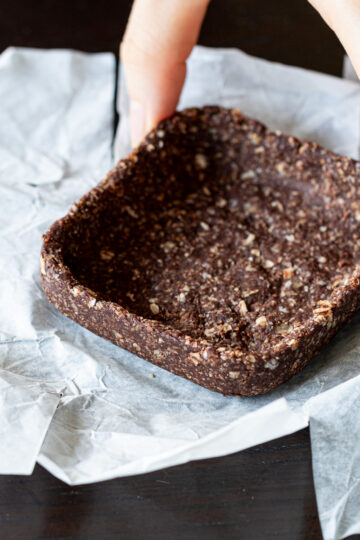
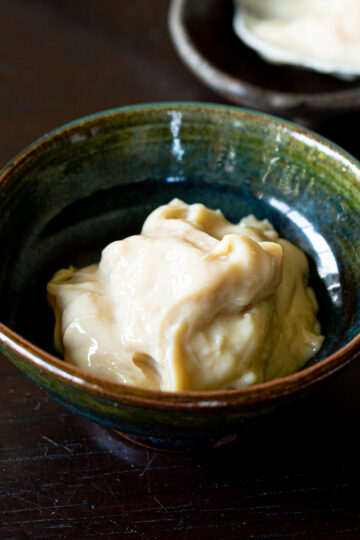
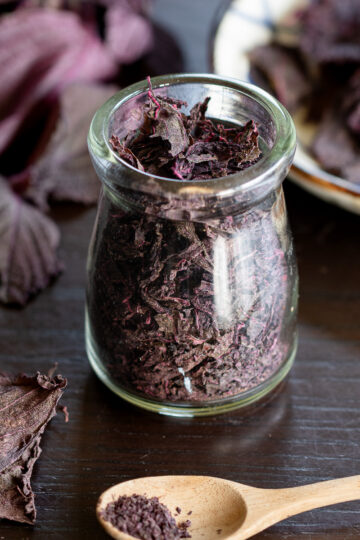
Vegin Vegan Vegun! says
We'd love to hear your thoughts! Feel free to ask any questions or leave any requests!